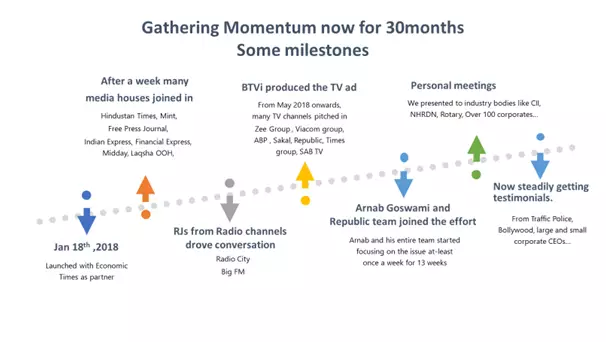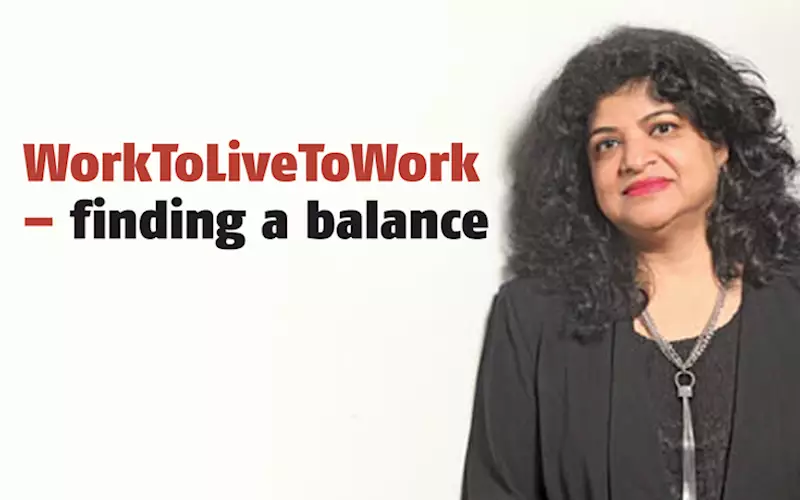WorkToLiveToWork – finding a balance - The Noel D'Cunha Sunday Column
Did you know that approximately 3,000 tax-paying citizens die every year in Mumbai? In major metros, the commuter network is ridiculously overworked and overloaded. And we don’t even know that there’s a problem.
Nandini Dias’ initiative, WorkToLiveToWork, encourages flexible timings for employees at the workplace with the aim to decongest rush hours.
In this Sunday Column, Dias discusses few do-able actions with minimal investment and measurable results
19 Jul 2020 | By Noel D'Cunha
I had two personal tragedies due to a 'regular' rush-hour stampede in Mumbai.
This is not a rare coincidence. Mumbai's crumbling commuter network is ridiculously overworked and overloaded. There are no doors on the trains, and those visuals of overflowing people hanging out at top speed are not just award-winning photographs, they are an everyday reality.
My deep personal trauma led me further to deep dive into statistics. In the previous five years, on an average eight to ten hardworking, tax-paying citizens died every day commuting in Mumbai. Approximately 3,000 a year. And it's been normalised as the inevitable price that has to be paid by one of the fastest-growing economies in the world. No media has bothered to report it unless 'it touches a figure of 20 or 25 deaths a day, from the current 10'.
To me, this was unacceptable. There had to be a solution or at least an attempt at it — a do-able action with minimal investment and measurable results. Even if I could bring the daily tally down from nine deaths a day to eight, that would mean 365 lives saved in a year. And the only place to start was the lynchpin in this gruesome chain.
The attendance register.
A nondescript relic of an archaic system that threatens every employee with a red late mark leading to a salary cut for being a few minutes late. There it lurked in every Mumbai office challenging seven-million commuters to defy death, just to get to work. A primitive functional tool that had stubbornly mutated into a death trap in the fast-moving world of modern connectivity.
The irony is this. A city that has the country's highest digital traffic, and that has the world's second-largest internet user base, loses 300 lives a month, just trying to physically sign a register within a 15-minute window every morning.
It's as ridiculous as it is tragic. Red tape is taking more lives in Mumbai than any terror attack in the history of Independent India. And all it would take to change this was a simple change in mindset. First with employers and employees as well. And it started with a simple, stark realisation.
True, we all have to work to live, but first, we have to live to work.
Thus WorkToLiveToWork was born. No mere hashtag, here was a powerful, mainstream, multimedia discourse that pulled no punches. Provoking corporates to take a good hard look at the mass tragedy their policies were inadvertently perpetuating inside their glass and chrome offices. It was shockingly accusatory and openly discomforting.
There could be no other way. Inertia had to be shaken up by Disturbia.
I decided that if it can be half as disturbing for the intended audience as it was for me, we would have made a start.
WorkToLiveToWork is a radical people's initiative that's pushing to make our working hours more flexible and commuting less fatal. By seeking the right to put our lives before our livelihood and by calling upon the city's CEOs, HR heads, and policymakers to initiate flexible office timings that would spread out the impossible peak hour load on our crumbling commuting infrastructure.
It is doing this under the full glare of the public eye with a non-stop narrative backed by mass media companies, television channels, business newspapers, and dailies. All of whom have come together to join hands in a rare act of solidarity, unity, and generosity.
International Advertising Association (IAA India Chapter) lost no time coming on board when I took the idea to them. Simultaneously, I started reached out to the top business houses in the city, reassuring them about zero effect on productivity and a highly motivated workforce. So far, I have presented the idea to more than 100 large corporates and even got NHRD the largest Human resources organisation on board to cascade it down to all their 5,000 members.
Corporates like Mahindra, Kansai Nerolac, and many more have now embraced the concept, and some have put out testimonial endorsing the benefits. But while there were doubts about the concept before COVID-19 hit us, now, all organisations have experienced that being in front of each other at all times is not a must.
Today, the looming pandemic has made the need to socially distance ourselves by decongesting rush even more critical. Because our roads are not getting any wider. And stations are not getting longer. And our trains are not getting roomier.
But if we open our minds, we can stretch time. We can make space on the clock. By spreading out our start timings between 8 am to 11 am, and proportionately our end timings between 4 pm to 7 pm. So we still work our full 8 hours a day, still, spend 5 hours together as a team in the office but end up using time distancing to help create social distancing.
This year WorkToLiveTowork has launched a new communication campaign with a renewed plea to switch to flexitime. On how in our city, only time distancing can create social distancing and quickly allow us to start the economy.
It's a campaign that needs to be shared and spread as much as possible. I hope more and more people will help evangelise it.















 See All
See All